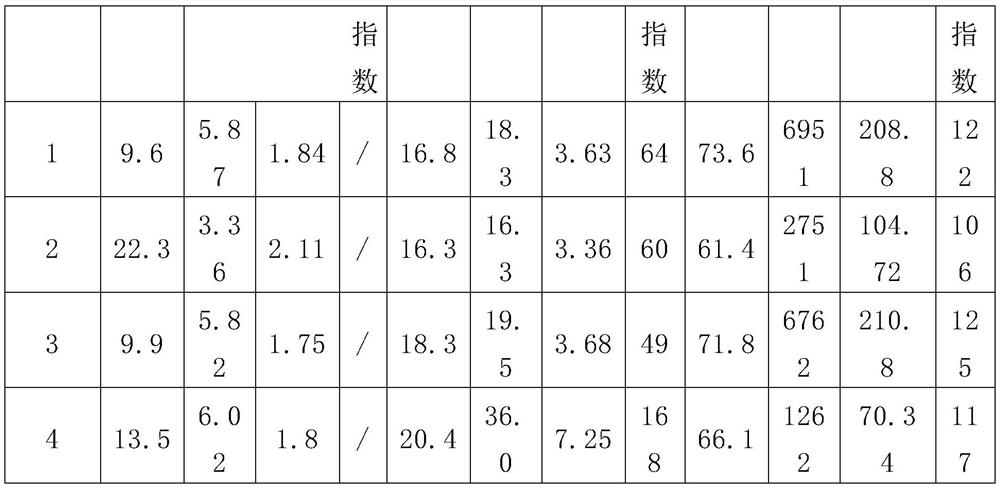Production method of polybutylene and product application thereof
A polybutene and product technology, applied in the field of polybutene production, can solve the problems of reducing the viscosity index of isobutylene polymerization products, increasing production costs, and limiting product applications, etc.
- Summary
- Abstract
- Description
- Claims
- Application Information
AI Technical Summary
Problems solved by technology
Method used
Image
Examples
preparation example Construction
[0044]The invention relates to a preparation method of polybutene, comprising the following steps: adding liquefied petroleum gas, a solvent and a catalyst into a reactor; Steps to polymerize within hours;
[0045] The step of fully adsorbing the catalyst in the reaction solution of step (a) with a powdery alkaline substance;
[0046] A step of removing unreacted liquefied petroleum gas under reduced pressure;
[0047] The step of hydrogenating the above remaining liquid through a hydrogenation catalyst;
[0048] And, the step of fractionating the obtained polymer to obtain lubricating oil base oil and metal processing oil.
[0049] Petroleum liquefied gas
[0050] According to the present invention, the term "petroleum liquefied gas" uses the common concept in this field, that is, petroleum gas containing C4 olefins produced in the process of petroleum refining. In addition to isobutene, these C4 petroleum liquefied gases usually contain a large amount of 1-butene and 2-b...
Embodiment 1
[0078] Inject C4 liquefied gas material 1 and BF respectively into the kettle-type continuous polymerization reactor 3 , Auxiliary compound tert-butanol, the molar ratio of tert-butanol and boron trifluoride (BF3) is 1.6:1, and boron trifluoride is injected in a kind of content like this: Make relative to the material 1 of 100 parts by weight in the reactant, The content of boron trifluoride is 0.05 parts by weight. The reactor is maintained at -5°C and the reactor is at least 3kg / cm 2Under pressure to keep the reactants in a liquid state, the average residence time was 30 minutes. After 180 minutes passed, the collected polymerization product was added to another reaction kettle, and potassium hydroxide powder with an average particle size of 150 μm, which accounted for 5% of the total mass of the material, was added. After stirring for 15 minutes, the solid was filtered off, and the remaining reaction liquid was flash evaporated. After removing the unreacted C4 liquefied g...
Embodiment 2
[0080] Basically the same as Example 1, but with the following changes:
[0081] The petroleum liquefied gas uses material 2, the catalyst uses aluminum trichloride, the auxiliary compound uses tert-butyl chloride, and the reaction temperature adopts 5°C. The powdered alkaline substance adopts calcium hydroxide powder with an average particle size of 300 μm, and the conversion rate of C4 liquefied gas into polymer products is 63.2% according to weighing calculations. The mass percentage, viscosity and viscosity of each fraction in the polymer product Indexes are shown in Table 2.
PUM
| Property | Measurement | Unit |
|---|---|---|
| Kinematic viscosity | aaaaa | aaaaa |
| Acid value | aaaaa | aaaaa |
| Pour point | aaaaa | aaaaa |
Abstract
Description
Claims
Application Information
 Login to View More
Login to View More - R&D
- Intellectual Property
- Life Sciences
- Materials
- Tech Scout
- Unparalleled Data Quality
- Higher Quality Content
- 60% Fewer Hallucinations
Browse by: Latest US Patents, China's latest patents, Technical Efficacy Thesaurus, Application Domain, Technology Topic, Popular Technical Reports.
© 2025 PatSnap. All rights reserved.Legal|Privacy policy|Modern Slavery Act Transparency Statement|Sitemap|About US| Contact US: help@patsnap.com


